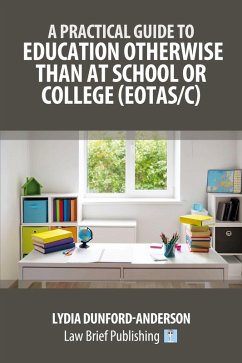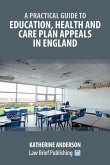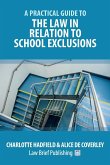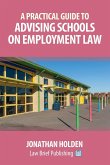The law on special educational needs is a niche area of practice that includes a potentially complex concept; Education Otherwise Than At School/College, known as EOTAS/C. The ultimate aim of this process is for a child or young person with special educational needs to be taught at least predominantly outside of a school or college. The legal requirements and steps to secure such an arrangement require careful consideration and understanding. One such requirement is having an Education, Health and Care Plan (EHCP). This a legally binding document maintained by the child or young person's local authority that sets out their special educational needs, the provision required to meet those needs and the name and or type of educational setting (school or college) they will attend. EOTAS/C offers an alternate option and, as such, a reconsideration of the legal requirements around EHCPs and the information and evidence needed to successfully inform and implement these. This is a detailed practitioners's guide to EOTAS/C including an overview, relevant case law and legislation, how EHCPs are informed by EOTAS/C, including through Personal Budgets, and practical points to consider. CONTENTS Chapter One - Introduction - Doesn't Education Have to Be in a School or College? Chapter Two - Our Starting Point - Pupils With Special Educational Needs And/or Disabilities (SEND) Chapter Three - Education, Health and Care Plans (EHCPs) Chapter Four - EOTAS/C Chapter Five - How Does EOTAS/C Fit Into EHCPs? Chapter Six - What EOTAS/C Is Not Chapter Seven - Out of School or College - Considerations for When EOTAS/C May Be Required Chapter Eight - Why Not Try Another Placement? Chapter Nine - What Is Needed to Support a Request for EOTAS/C? Chapter Ten - If EOTAS/C Is Not Agreed, What Then? Chapter Eleven - A Flexible Take on EOTAS/C - A Sign of Progress, or Cause for Ambiguity? Chapter Twelve - EOTAS/C - What Is Next?
Bitte wählen Sie Ihr Anliegen aus.
Rechnungen
Retourenschein anfordern
Bestellstatus
Storno









